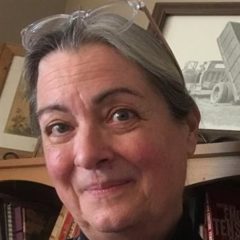What is ‘plain language’? A clear and straightforward explanation of a concept or term that avoids using technical jargon or complex language. It’s designed to be easily understood by a wide audience, including those who may not have expertise in the subject matter. The goal of plain language is to communicate information effectively and efficiently, making it accessible to as many people as possible.
Great Plains QIN recently hosted an event, Using Plain Language – The CLAS-y Compliant Style of Healthcare Conversations and Communication. Dr. Kay Temple, MD, MMC, shared her knowledge and expertise of using plain language and the benefit of simplifying messages for improved understanding, enhanced equitable care, increased adherence to treatment plans, a reduction in errors and overall cost-effectiveness. Dr. Temple also offered plain language tools, resources and practical application strategies.
One attendee commented, “It was a great reminder to ensure that your patients understand what you are saying by using the teach-back method. Remembering that teach-back is not a test of the patent’s understanding of my teaching, but more of a test of how well I presented the information.”
Another shared, “I plan to update our Nurse Residency program to include this information. Appreciate the resources! The speaker is engaging and easy to listen to. Would be interested in having her present on this topic at our hospital.”
Watch the Recording to better understand how plain language can be used everyday to improve communication.
Plain Language Resources:
- Plain Language: Keep It Jargon Free
- A Plain-Language Checklist
- Downloadable Plain Language Thesaurus
- Jargon Be Gone – Patient Preference in Doctor Communication
- Rural Health Literacy Toolkit
- Great Plains QIN- CLAS Playbook
Speaker: Kay Miller Temple MD, MMC
Health and Medical Content Writer | Rural Health Information Hub
University of North Dakota Center for Rural Health
 |
For 30 years, Dr. Kay Miller Temple practiced internal medicine, pediatrics and hospice/palliative care in urban and rural areas. She served in numerous leadership positions, including 5 years as chair of a Southwest quaternary healthcare system’s Utilization Review committee. With a master’s in journalism and mass communication, she is in her 8th year as a writer covering rural health topics for a federally funded national rural health information clearinghouse based at the University of North Dakota Center for Rural Health and housed in the university’s School of Medicine and Health Sciences. She has expertise in rural health literacy and plain language and speaks frequently on these topics.
|

